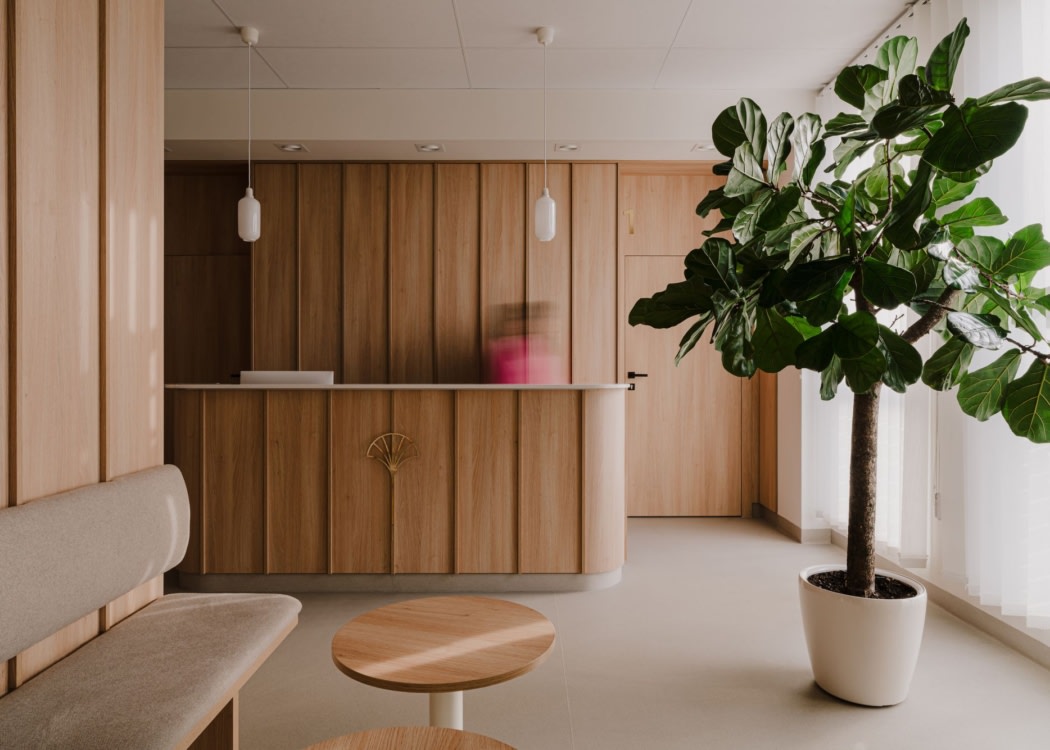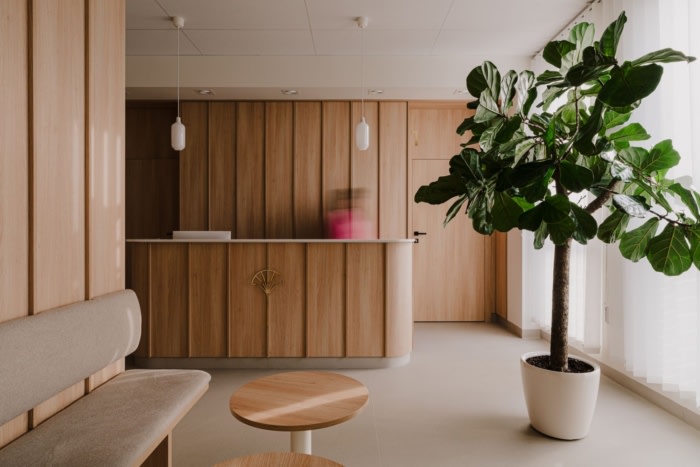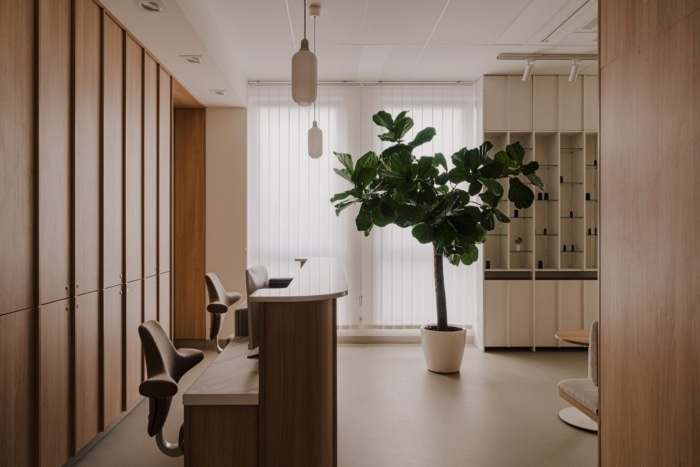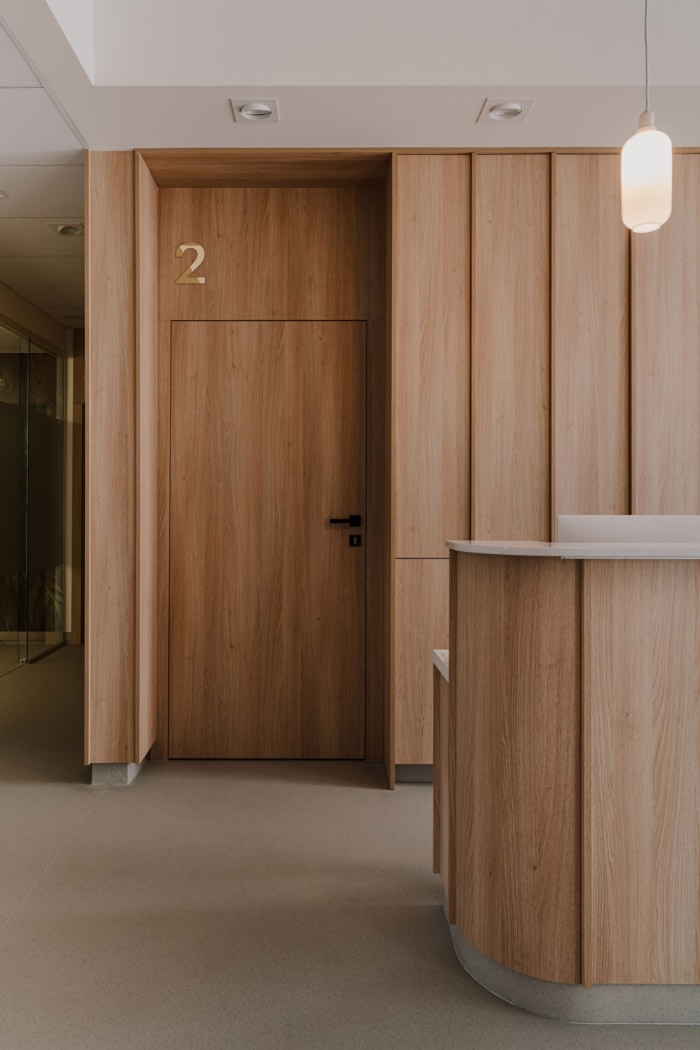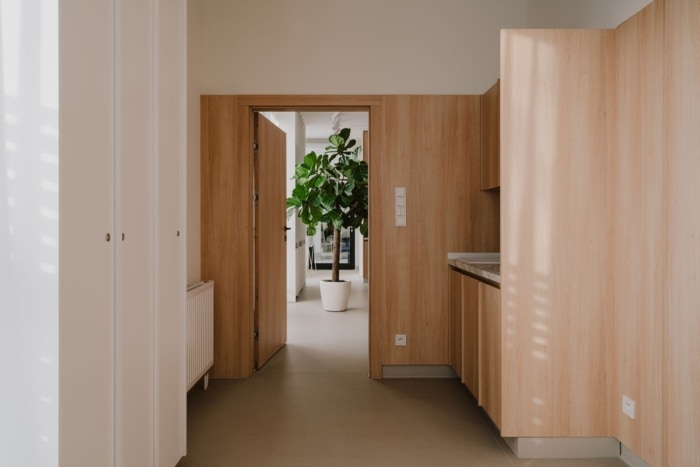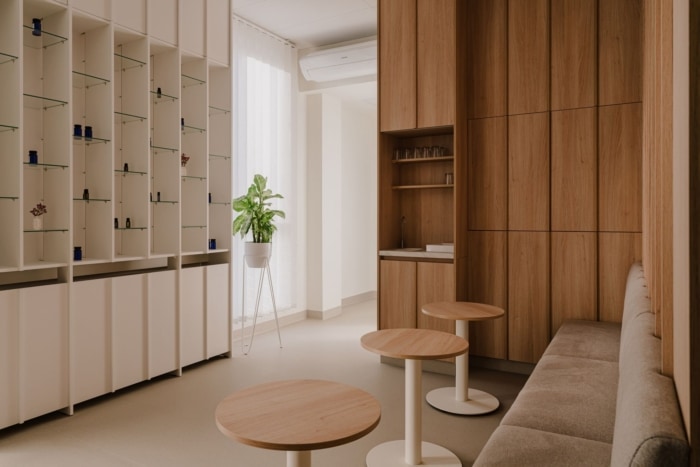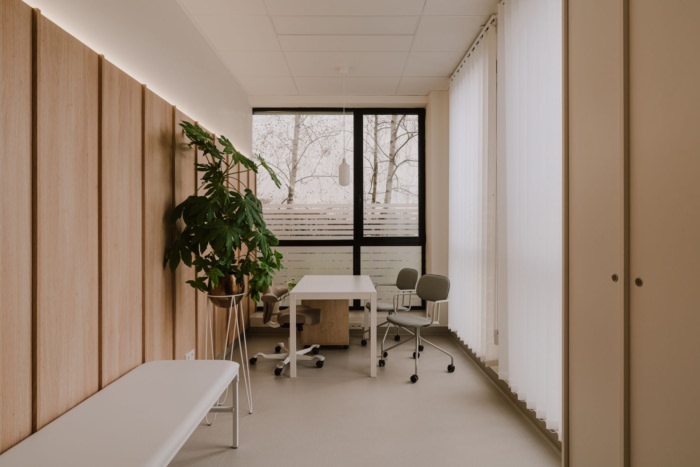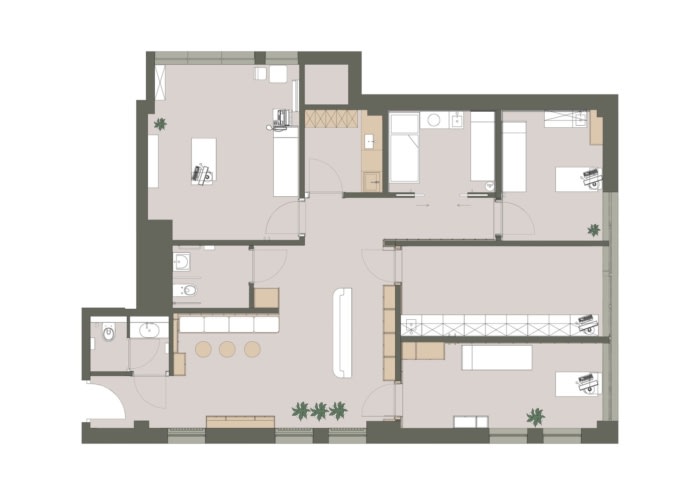MIGRE Polish Migraine Treatment Centre
hanczar studio utilized a patient-first approach when designing MIGRE Polish Migraine Treatment Centre in Wroclaw, Poland.
The interiors of the MIGRE Migraine Treatment Center in Wroclaw, designed by hanczarstudio, are a soothing, patient-friendly space, devoid of stimuli that exacerbate malaise during attacks of migraine pain. It was the needs of patients, not fashionable trends, that had a decisive influence on the final design of this space.
Migraine is a neurological disorder characterized by severe, throbbing, unilateral headache accompanied by nausea, photophobia, phonophobia. The causes of its occurrence are still not fully known. It is likely that they are a combination of genetic predisposition, various environmental factors and increased sensitivity of the brain to stimuli. It is estimated that up to 90% of migraine sufferers are women.
Less light!
People with active, severe migraine pain suffer from photophobia. In home conditions, they even experience attacks in twilight, which can sometimes be a nuisance to household members. Hence, in MIGRE, the designers decided to avoid visible light sources and use as many as possible of those giving indirect, diffused, soft light. In addition, the light had to be of lower intensity – somewhat in contradiction to the standards, but prioritizing patient comfort. Standards are met with the inclusion of all upper light sources, but in the day-to-day operations of the center they are not used. The project even included halogens, which are absolutely inadvisable in the environment of migraine sufferers – as illumination for the display rack – but it too has its alternative source of soft lighting in the form of reflected light. Finally, the last element of the lighting system is vertical blinds, regulating the access of sunlight to the interior.Soothing space
Lighting designed in this way avoided shadows, drawn by light, strong, sharp edges. The interior also lacks vivid colors and contrasting colors – this is also a way out for migraine sufferers. Warm broken whites, sandy beiges and light, bleached browns, light woods dominate. A very limited color palette and the harmony of the vertical rhythms of the wall coverings bring visual calm.A third area of concern for patient comfort was interior acoustics. The building is located in a quiet neighborhood, with no heavily used roads nearby. As a result, it was possible to avoid the use of radical soundproofing and focus on the interior. The entire ceiling is finished with acoustic panels, guaranteeing no reverberation and sound attenuation. Wall coverings also support the soundproofing effect, as do vertical blinds and potted plants. All these elements add up to provide the expected acoustic comfort,” enumerates Szymon Hanczar.
Practical and hygienic
While associations with a medical facility could be avoided in the visual layer, the materials and solutions used had to meet the requirements applicable to such a facility. First of all, washable surfaces were relied on. PVC carpet is used on the floor, giving the effect of a uniform surface without joints. The benches in the waiting room are also implicitly washable (hard) elements with removable upholstered elements. As the project was being created in the first weeks of the pandemic, counter tops to minimize the spread of viruses by the droplet route are also in development.Virtually all of the center’s furnishings, except for the couch, desks and office chairs (here, with concern for staff comfort, HAG ergonomic chairs were used), were designed by hanczarstudio and custom-made. Particularly striking are the wall coverings in the waiting room, which, so to speak, flow seamlessly into the reception area and the bookcase at its back, defining their shape and detail. Custom-designed furniture also made it possible to optimally develop the clinic’s space – at just over 110m2 there are 5 offices, a hall with a waiting room, two toilets and social facilities.
Design: hanczar studio
Photography: Zasoby.Studio

